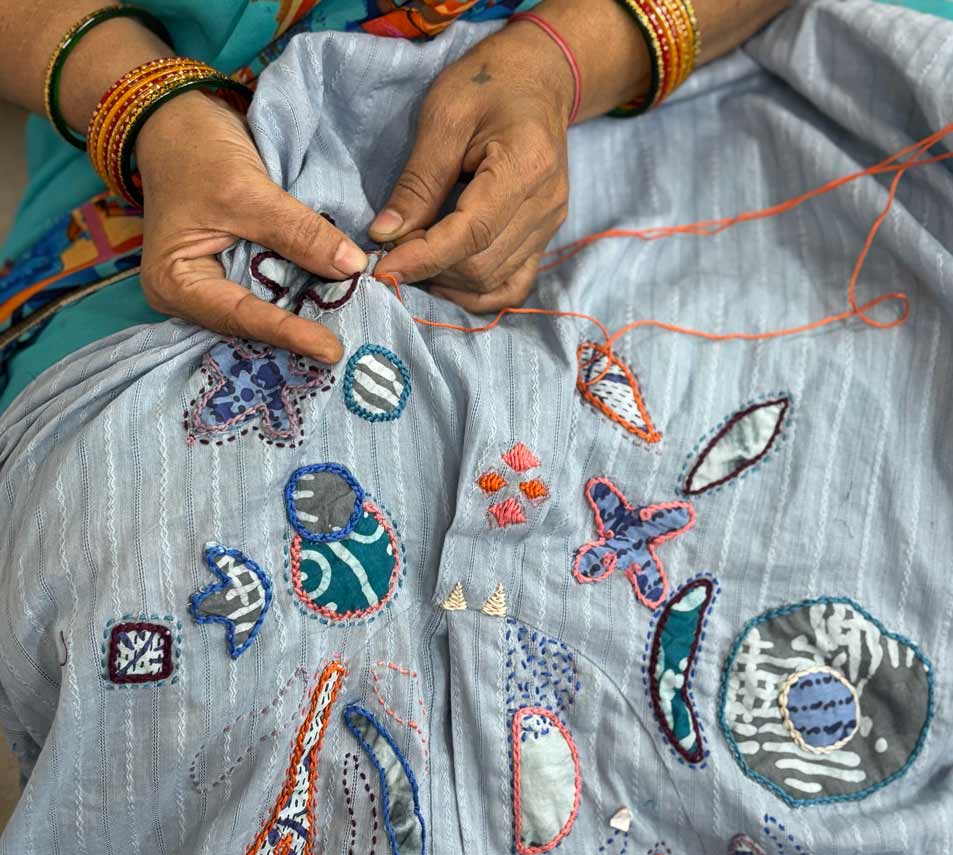The Amreli Tunic: A Testament to Human Touch
May 30TH, 2025
At first glance, the Amreli Tunic might catch your eye with its playful shapes and intricate details—but there's so much more beneath the surface. This isn't just a beautiful piece of clothing; it's a story stitched together by many skilled hands. It reflects a level of craftsmanship, care, and creativity that no machine or AI could ever replicate.

Each appliqué shape is cut from chindis—small fabric scraps left over from cutting other garments. While we often use larger scraps in our designs, this tunic was created specifically to make use of even the smallest remnants.
That said, producing a few hundred of these tunics isn't easy. It begins with developing a precise and efficient system to cut the appliqué shapes and place them accurately on the garment to match the original sample. Adding to the complexity, the embroidery is done by women working from home, introducing another layer of coordination and care.

At the workshop, paper stencils in the shape of the appliqué pieces are used to mark their placement on the fabric. A few women handle this task. The cut appliqué fabrics are then sent along with the marked garment to the artisan who will do the embroidery. The artisan takes a picture on her phone for reference.
It's worth pausing to appreciate just how far things have come. Not so long ago, many of the women weren't sure which end of a rotary phone to hold to their ear. Today, they're using smartphones to stay connected—receiving production updates, sharing meeting information through group chats, and even joining virtual yoga sessions. What was once unfamiliar technology is now an essential part of their daily lives, helping them stay informed, organized, and empowered.

While the shapes are distinct enough to be placed correctly, some of the small, curved ones require extra skill and patience. The embroidery—both on and around these shapes—demands a steady hand and an eye for detail.
The result? A garment that is unmistakably unique. The Amreli Tunic is more than clothing—it's a labor of love touched by many hands. Wear it with pride, knowing that it carries the stories and spirit of the women who made it.

